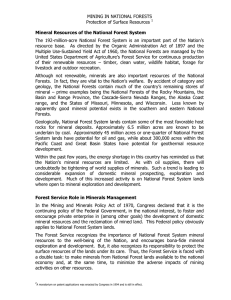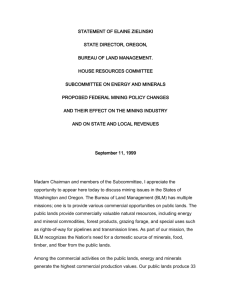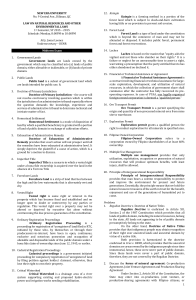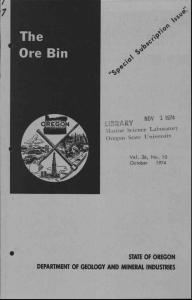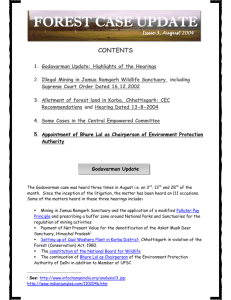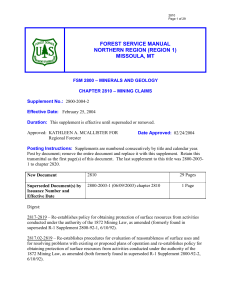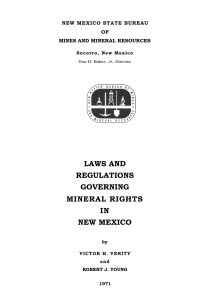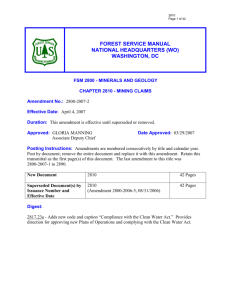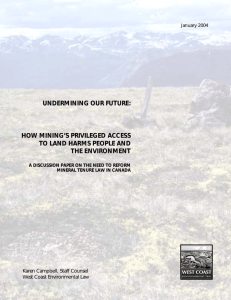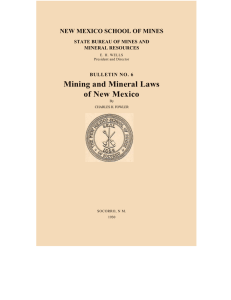While our organization believes that the location and mining of
advertisement
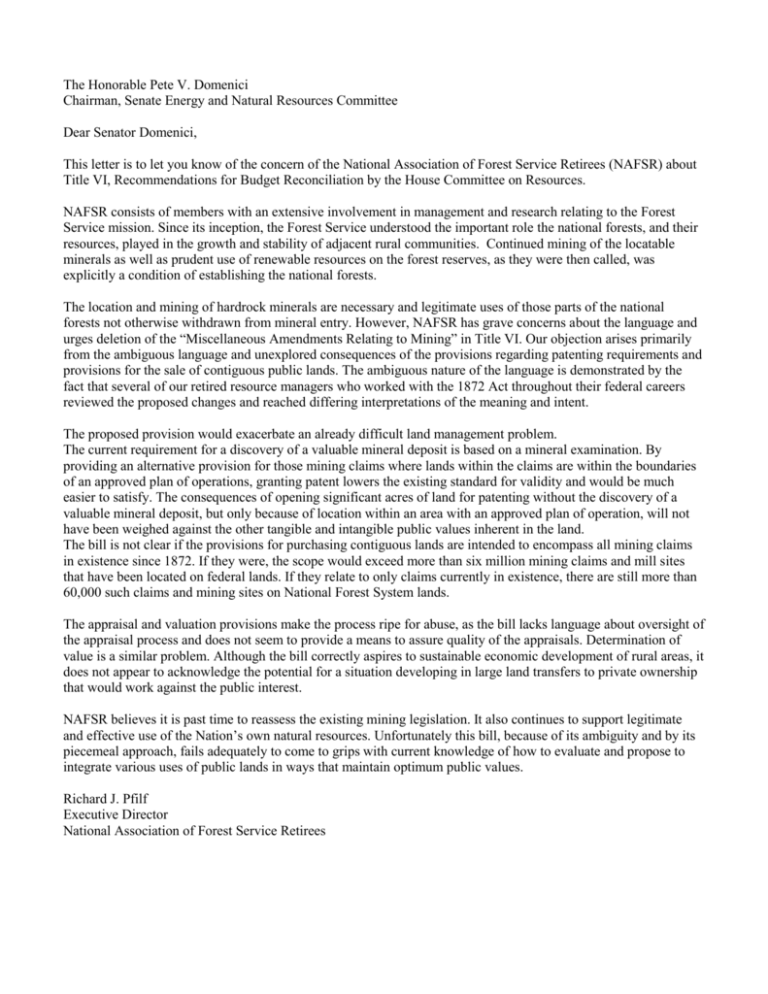
The Honorable Pete V. Domenici Chairman, Senate Energy and Natural Resources Committee Dear Senator Domenici, This letter is to let you know of the concern of the National Association of Forest Service Retirees (NAFSR) about Title VI, Recommendations for Budget Reconciliation by the House Committee on Resources. NAFSR consists of members with an extensive involvement in management and research relating to the Forest Service mission. Since its inception, the Forest Service understood the important role the national forests, and their resources, played in the growth and stability of adjacent rural communities. Continued mining of the locatable minerals as well as prudent use of renewable resources on the forest reserves, as they were then called, was explicitly a condition of establishing the national forests. The location and mining of hardrock minerals are necessary and legitimate uses of those parts of the national forests not otherwise withdrawn from mineral entry. However, NAFSR has grave concerns about the language and urges deletion of the “Miscellaneous Amendments Relating to Mining” in Title VI. Our objection arises primarily from the ambiguous language and unexplored consequences of the provisions regarding patenting requirements and provisions for the sale of contiguous public lands. The ambiguous nature of the language is demonstrated by the fact that several of our retired resource managers who worked with the 1872 Act throughout their federal careers reviewed the proposed changes and reached differing interpretations of the meaning and intent. The proposed provision would exacerbate an already difficult land management problem. The current requirement for a discovery of a valuable mineral deposit is based on a mineral examination. By providing an alternative provision for those mining claims where lands within the claims are within the boundaries of an approved plan of operations, granting patent lowers the existing standard for validity and would be much easier to satisfy. The consequences of opening significant acres of land for patenting without the discovery of a valuable mineral deposit, but only because of location within an area with an approved plan of operation, will not have been weighed against the other tangible and intangible public values inherent in the land. The bill is not clear if the provisions for purchasing contiguous lands are intended to encompass all mining claims in existence since 1872. If they were, the scope would exceed more than six million mining claims and mill sites that have been located on federal lands. If they relate to only claims currently in existence, there are still more than 60,000 such claims and mining sites on National Forest System lands. The appraisal and valuation provisions make the process ripe for abuse, as the bill lacks language about oversight of the appraisal process and does not seem to provide a means to assure quality of the appraisals. Determination of value is a similar problem. Although the bill correctly aspires to sustainable economic development of rural areas, it does not appear to acknowledge the potential for a situation developing in large land transfers to private ownership that would work against the public interest. NAFSR believes it is past time to reassess the existing mining legislation. It also continues to support legitimate and effective use of the Nation’s own natural resources. Unfortunately this bill, because of its ambiguity and by its piecemeal approach, fails adequately to come to grips with current knowledge of how to evaluate and propose to integrate various uses of public lands in ways that maintain optimum public values. Richard J. Pfilf Executive Director National Association of Forest Service Retirees







